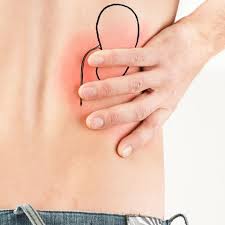Source:medicalnewstoday.com
Kidney stones are mineral deposits that form in the kidneys. They can vary in size, with some being as small as a grain of sand, and others being as large as a pebble. The size of the kidney stone does not always correspond to the severity of the symptoms a person might experience.
Small kidney stones may pass through the urinary tract without causing any symptoms. However, larger stones may become stuck in the urinary tract. This is usually the point at which a person will experience the first signs and symptoms of a kidney stone.
This article outlines the early signs and symptoms of kidney stones. We also discuss the causes of kidney stones, as well as their potential complications.Early signs and symptoms
Kidney stones vary in size. Tiny stones are less likely to become stuck in the kidneys or other parts of the urinary tract. Mild to moderate symptoms may occur during the passage of a small stone, although many people may pass stones without experiencing any pain.
Larger stones may cause pain, bleeding, inflammation, or infection. However, these symptoms may not usually develop until the stone has started to move through the urinary tract.
Below are some early signs and symptoms that may indicate a kidney stone is moving through the urinary tract.
Pressure or pain in the lower back
In some cases, a stone may become stuck in the ureter. The ureter is the tube that carries urine from the kidney to the bladder. A blockage here causes urine to back up in the kidney, resulting in pressure and pain sensations in the lower back. These symptoms may occur on the left or right side, depending on which kidney is affected.
According to the University of Chicago, pain or pressure are usually the first signs of a kidney stone. In some cases, the symptoms may be very subtle and build up slowly. In other cases, they may come on suddenly, with no early warning signs.
This pain can be severe and may lead to nausea or vomiting, or both. People often experience sharp, stabbing pain, and common measures such as rest or lying down do not relieve it.
UTI-type symptoms
In some cases, a person with a kidney stone may notice symptoms similar to those of a urinary tract infection (UTI). These include:
- more frequent urination or urges to urinate
- pain or discomfort during urination
- discolored urine
- foul smelling urine
- blood in the urine
- fever
Anyone experiencing any of the above signs and symptoms should visit their doctor. The doctor can run tests to check the urine for signs of a UTI. If there is no infection present, the person may be passing a kidney stone.
When a stone is present along with an infection, this can be a serious medical concern which may prompt emergency treatment.
Gastrointestinal issues
A person who has a kidney stone may experience issues with their stomach and gastrointestinal (GI) tract. Some GI symptoms that could signal a kidney stone include:
- nausea
- vomiting
- general stomach discomfort that does not go away
According to the American Kidney Fund, a person should see their doctor if they experience any of the above GI symptoms.
Kidney stones usually form when a person’s urine contains excessively high levels of certain chemicals.
We outline the four main types of kidney stones below.
Calcium stones
There are two types of calcium stones: calcium oxalate and calcium phosphate. Together, they account for around 80% of all kidney stones.
Struvite stones
Struvite stones account for around 10% of kidney stones. They are usually the result of chronic UTIs, which can make the urine more alkaline. This promotes the growth of large, branch-like struvite stones.
Uric acid stones
Around 5–10% of kidney stones are uric acid stones, which develop as a result of excess acid in the urine.
Cystine stones
Less than 1% of kidney stones are composed of the amino acid “cystine.” A rare inherited condition called “cystinuria” prevents the kidneys from reabsorbing cystine from the urine. People with this condition are at increased risk of developing cystine stones.
